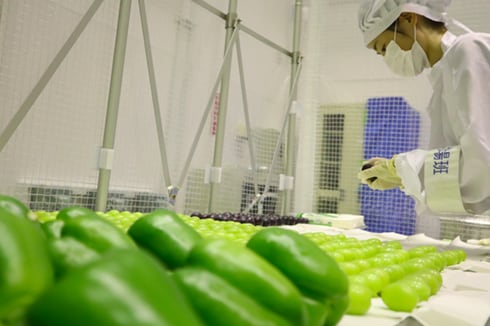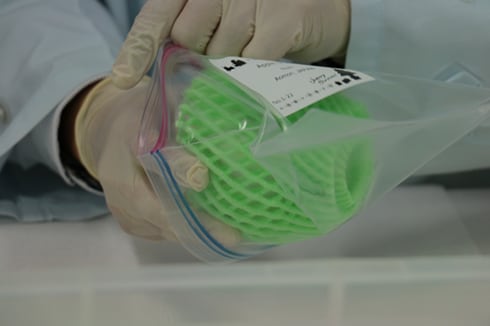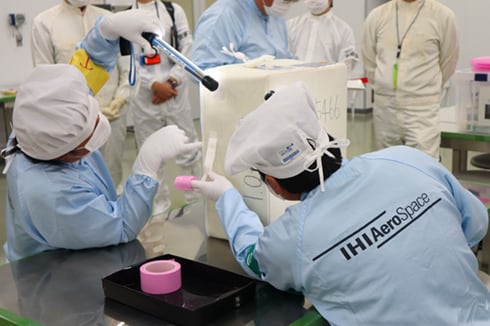Eating fresh fruits and vegetables in space
Under the ISS program, those countries and regions in possession of supply ships deliver fresh food products such as fruit and vegetables to the astronauts aboard the ISS. While it was still active, seasonable fresh fruits and vegetables from around the country had been loaded into Japan’s supply vehicle, the "KOUNOTORI" (HTV), and delivered to the ISS. Here, we will take a look at some of these fresh Japanese foods.

Selection of products

First, JAXA requests the prefectural governments of Japan to provide information about fresh foods (vegetables and/or fruits only) including harvest time and special product via the prefectural MAFF (Ministry of Agriculture, Forestry and Fisheries) officials’ liaison council.
Based on provided information, several candidate products will be selected according to technical requirements*1 such as cookability, preservative quality, hygiene, safety, residue and whether procurement period coincides with launch date. Selected products will be subjected to an organoleptic evaluation (taste) and the selection committee will make a final decision in the selection.
Technical requirements for launching fresh food
| Requirement | Content |
| Cookability | The product is eatable in uncooked conditions. |
| Preservative quality | The product can be preserved for at least four weeks in the conditions simulating the thermal environment at the Tanegashima Space Center (TNSC) and in the Pressurized Logistics Carrier (PLC) of the HTV while it is loaded in the vehicle. |
| Hygiene | The number of general bacteria is smaller than 10,000 CFU/g after sterilization. |
| Safety | The edible part of the product is not the seed, no juice scatters while eating and the product is not subject to the regulations for indication of allergic ingredients. |
| Residue | Amount of residue after eating is extremely small. |
| Voluminal constraint | The product can be loaded on the designated area in the vehicle. |
| Procurement time | The product can be procured in time for the preservation test*2 and loading operation. |
*2 A test for checking that the fresh food proposed for loading can be preserved at 22°C (including temperature changes simulating the real loading environment) for four weeks. The product is checked about the number of general bacteria and yeast/molds. During the test, an organoleptic assessment is conducted.
Preparations for cargo loading

JAXA selects the fresh foods to be loaded approximately four weeks before the launch (in the case of HTV). After the selected foods are sterilized, dried, and packed, they are packed into the Cargo Transfer Bag (CTB) at the Tanegashima Space Center. Finally, after its appearance of the CTB will be checked, the fresh food is mounted on the spacecraft and delivered to the ISS.
Operations at Launch Site

Sterilization / drying
(About 8 - 10 days before launch)

Packing (About 8 days before launch)

Packing into the Cargo Transfer Bag (CTB) (About 7 days before launch)

Checking the CTB and loading into HTV (About 4 - 5 days before launch)
Japanese Fresh Food
Delivery of fresh foods to the ISS began with the HTV-5. Along with other foods that do not have a long shelf-life, they would be loaded onto the vehicle immediately before launch and unloaded as quickly as possible, an express delivery service known as “late access.” This enabled the delivery of foods still with a high degree of freshness.

Related Media
Related videos
Related images
Related Links
Unless specified otherwise, rights to all images belong to ©JAXA



